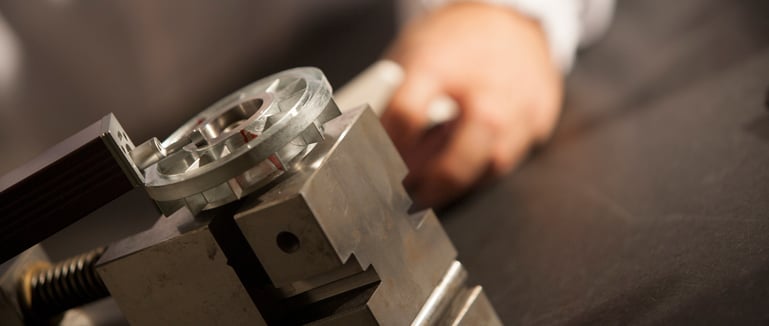As winner of numerous international awards, Bruschi Spa is known for its innovative approach in design and technology. We are glad to share our insights and experiences with the industry members.
The best approach to cost reduction in casting process
In order to apply a cost reduction in casting the designer should have a global view of the entire process. Casting process is composed of different phases that allow zamak becoming finished and packaged product: in this post we will examine the six stages of die casting process and analyze how and when it is possible to reduce costs.
Casting process is composed of six phases:
- Die casting
- Elimination of runners and overflows
- Handling
- Surface treatments
- Packaging and delivering
- Controlling the process
Die casting
The best way for cost reduction, during die casting process, is to think about the production phase during the mould design, in fact reducing costs is an issue that must be approached at the very beginning of the project.
Designers have to focus on different aspects such as obtaining a functional product with aesthetical and technical characteristics required by clients, obtaining a low scrap rate and time cycle, reducing runner and overflows weight, decreasing mould and die casting machine wear.
Furthermore is important to consider that there are many conditions that follow or precede casting phase that are bounded to it. For example is fundamental to estimate quantities of material to be produced to create a mould with the right number of cavities. If this number is underestimated the company cannot satisfy clients’ orders, and could be forced to use machines for a longer time or to create a new mould; if the number is overestimated the production deals with a more complex mould than was needed with a consequence of higher risk of producing scraps.
Elimination of runners and overflows
This phase regards cooling, elimination of sprues and positioning components for handling.
It is really important to decrease the time of this phase that is lower than the one of die casting; on the other hand is necessary to foresee a buffer where components are accumulated to be processed in a second time.
Cooling phase has a central role in reducing time. With quenching, for example, many ways are possible: changing the type of fluid its temperature and its status that can be static or dynamic. In fact if the fluid is static it takes more time to cool down the component, if not quenching is quicker because speed increases the heating transfer.
To avoid secondary deburring and finishing is necessary to design an automatic process of runners and overflows elimination, that allows to obtain finished or semi-finished components ready for secondary treatments.
Using an automatic system also to position parts for handling allows to cost reduction in terms of time and manufacture.
Handling
Often the designer does not consider handling phase important, but it can be a tough problem at the beginning of mass production.
In particular considering dimensions, weight and aesthetic qualities requested is important to foresee a system that minimizes time, dimension of containers, positioning and handling components inside them.
Is important to avoid shock, in particular with high aesthetic quality requested, waste of space and lead time too long. A just-in-time process allows to cut stocked materials and in this way is possible to obtain a cost reduction in casting process. In this case is fundamental to consider organizing flows as well as design.
Surface treatments
Surface treatments cycle need to be designed and optimized with the aim to produce finished product requested by clients. Often is the client that imposes different steps of the cycle, otherwise is the designer that can choose them. In this case the first phase of the cycle is dedicated to polish components and can eliminate marks created during die casting process such as part lines.
Then the component has to be prepared for the real surface treatment and linked to the type of treatment the designer will choose the best solution for it: degassing, sand blasting and deburring can be part of this process.
Packaging and delivering
Also in this phase, such as during handling phase, design characteristics of components have to be considered. Packaging and delivering are fundamental because they are the first elements that clients see. Package volume and time are principal aspects that need to be optimized for cost reduction. The first one need to be reduced without touching the external integrity of the product; while the second one decreases when the packaging allows a quicker insertion and extraction.
Controlling the process
This step crosses every aspect of the entire die casting process and it regards its steadiness.
It is really important to be focused on this phase to avoid non-compliances. Controlling can be operated in two different ways: firstly recording parameters and handling them during the process, secondly is necessary to operate sorting actions to prevent delivering of non-compliances components that are caused by uncontrolled parameters.
For other content related to cost reduction in zinc die casting process read Cost reduction in zinc die casting. To be updated on trends and innovations in the Zinc Die Casting industry, you are welcome to subscribe to our blog.
Our technical staff is available to support your designers' inventiveness and to develop innovative and creative solutions together, in case you need any further information, please get in touch.


